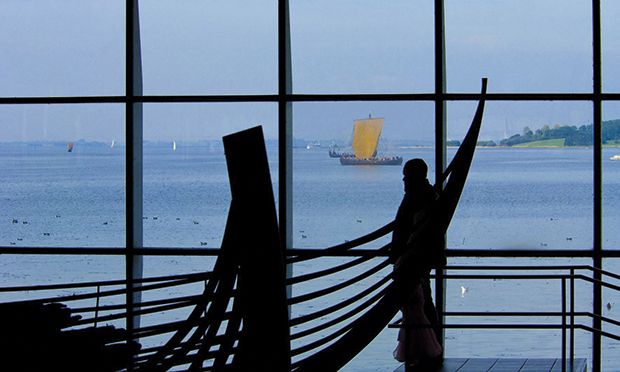The artefacts in Roskilde’s Viking Ship Museum will be transferred to a more secure environment in a new institution Photo: Werner Karrasch, © The Viking Ship Museum, Roskilde
The Vikings are conquering new territory once more: in the Danish city of Aarhus, where plans are afoot for a new Viking museum; in Roskilde, Denmark, where construction is to begin on a new home for Viking ships; and in Norway, where Oslo’s vast new Museum of the Viking Age is taking shape.
These expansive plans reflect the modern day’s enduring fascination for a people who resisted Christianity and explored new frontiers as far afield as Newfoundland and Baghdad, says Mads Kähler Holst, the director of Moesgaard Museum in Aarhus.
“The Viking Age was a time of discovery,” Holst says. “It was also a time of transition, where the old world met the new and then finally came to an end with the introduction of Christianity. The Vikings left a strong mark on Northern Europe, and that part of our cultural history fascinates both our local and international visitors.”
Together with the city of Aarhus, the museum last month proposed a new Viking museum in the heart of the old town, not far from the cathedral, the city’s most prominent landmark. At present the Moesgaard Museum, whose main building is around 10km south of Aarhus, operates a small underground Viking museum on the city-centre site that has been proposed for the new institution.
An analysis has shown that such a museum could attract between 320,000 and 390,000 visitors annually. The next stage is to organise an architectural competition; archaeological excavations on the planned site could begin in 2028 and the museum, which would focus on the period from 700 to 1100, could be completed by 2032, the proposal says.
“Aarhus has an unusually deep history, but it is surprisingly unknown,” Holst says. “Unusually, the city has preserved its original location from the 700s, so you literally walk in the footsteps of the Vikings when you walk around the city centre.”
The planned museum would add to a range of Viking institutions already operating in Denmark: one in Ribe, where archaeological finds from 2017-18 have prompted a rewriting of the town’s history in the eighth and ninth centuries; a branch of the national museum at Jelling that tells the story of the Viking kings and the transition to Christianity; and the Viking Ship Museum at Roskilde.
Storms in the fjord at Roskilde have become more severe and frequent due to climate change, meaning that the five Viking ships on show there have on occasion had to be secured after storm warnings. A new home for them, to be built by Lundgaard & Tranberg Architects, “will lie at the highest point on the museum site, at a safe remove from the power of the sea,” Tinna Damgård-Sørensen, the director of the museum, said in a statement earlier this year.
Meanwhile in Oslo, the new Museum of the Viking Age currently under construction is an expansion of the existing Viking Ship Museum, home to the best preserved Viking ships in the world. Not only will it triple the available space, it will also offer improved conservation conditions for the ships, the museum says on its website.

